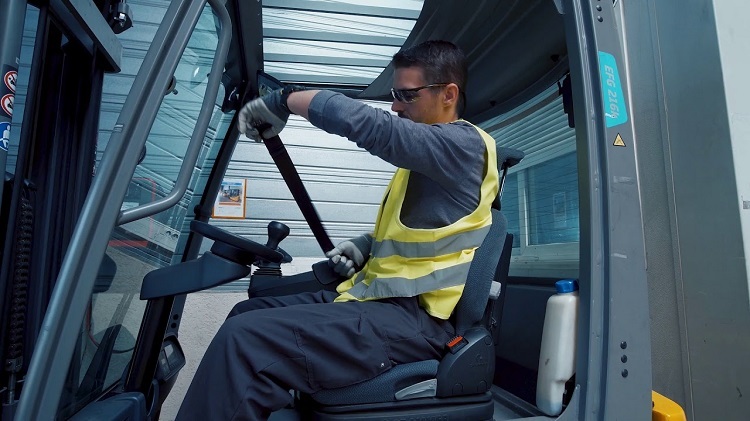All of us who drive on a route or get on a bus, sometimes complain about the misconduct of these professionals behind the wheel, but we ignore the risks they are permanently subjected to in their professional work. It is good to take a look at this topic to, first try to understand them and value their task and later, if possible, do something to prevent these risks. This issue must be investigated and studied so that it is known by the workers themselves and society in general in order to improve the health of this important sector, helping to identify the risks of their job and facilitate those tools for self-assessment and preventive planning in Truck Driver Safety Training.
During their working day they are almost all the time seated, but in continuous tension, exposed to constant noise, vibrations, bad positions, and mistreatment sometimes from other drivers as well as from the passengers they transport. All this aggravated, in some cases, by having to receive money and make a return to collect the ticket.
Table of Contents
Noises from the street or the road can cause alterations to your Hearing
Hearing aid and vibrations can affect your spine. Poor positions can produce alterations of the same and, therefore, a change in pressure in the intervertebral discs, which can translate into pain and functional impotence or herniated disc. Sometimes this work is carried out in a small space that does not meet the conditions to carry out the work with a certain comfort, and also inside the vehicle, there are continuous changes in temperature due to the entry and exit of passengers.
In general, the driver of large vehicles is a sector with little awareness in the preventive culture, and sometimes they are erroneously formed in the belief that “they can do anything.” Starting from this basis, a personal incentive is created trying to carry out more hours of work than those actually recommended for their task, which constitutes another stressor.
The main health problems of workers in this profession are determined by the peculiarities of working conditions, which can be summarized in the following conditions.
1) Fatigue and fatigue
Most drivers have long working hours that go from 12 hours to 14 hours a day; some even go as far as 16 hours of work a day. These long hours determine the way to organize your family and social life. In addition to the possible accidents due to fatigue that can occur.
In general, they have difficulty carrying out an adequate meal regimen and the time they dedicate to it is insufficient, and many of them even eat in improvised places depending on the last service they have provided, which is ultimately determined by the type of working hours. Most of the time they eat fatty foods and little
Fatigue is defined as the decrease in work capacity caused by previous effort. It diminishes the state of wakefulness of the senses, becoming a great obstacle for driving activity.
2) Stress
We must bear in mind that it is a task of truck driver safety training that carries a great mental load, translated by the sum of tensions induced in a person by the demands of the work he performs. There is intense processing of information from the environment based on previous knowledge, remembrance, reasoning, and finding solutions. He is always subjected to the rhythm of work, the level of attention, the visual, auditory, and mental fatigue, which causes him to increase his stress. Something that is greater when working at night.
3) Noises and vibrations
Hearing loss is one of the consequences of the noise they are exposed to since it comes from both the city and the vehicle itself. Otitis is also frequent due to the improper use of the windows and especially the noise and vibrations sometimes produced by the same vehicle or sometimes by defects on the road, or faulty design of the driver’s seat, which is not usually prepared to absorb vibrations.
4) Ergonomic risks
The main injuries that a driver may suffer are low back pain and musculoskeletal disorders due to discographies, twists, and flexions of the spine due to the sitting posture in which his work is performed. Joints and legs can suffer repetitively for the same reason, twisting, twisting, stretching for too many hours.
There are many preventive measures in truck driver safety training, but by way of example, the following should be taken into account
- Adjust the angle and position of the seat, lumbar support, and headrest.
- Maintain a posture that allows a comfortable view of the horizon.
- Use lumbar support. If the seat does not have lumbar support, you should improvise a substitute, using a small pillow.
- Check vehicle controls before driving. Mobilize the
- If glasses are used, to avoid visual fatigue it is advisable that the lenses be of the anti-reflective type.
- At night you should avoid taking heavy meals, alcohol, caffeine, and stimulants in general.
- Periodic medical examinations should be carried out in order to know if daily work conditions affect your health.
- As far as possible, a work schedule should be maintained
All of the above points to the prevention of accidents and to generate greater awareness in truck driver safety training and responsibility in those who are in charge of transporting passengers.











